Wedding Flower Budget Tips: Stunning Blooms Without Breaking the Bank
Planning your wedding can be exciting, but managing a budget for flowers can be tricky. Flowers add beauty and charm to your big day, but it can be challenging to keep costs in check. Learning a few smart strategies can help you get the stunning floral arrangements you dream of without breaking the bank.

In this article, you’ll find helpful tips to make your wedding flowers beautiful and affordable. You’ll discover creative ideas and practical advice to ensure that your floral choices won’t strain your budget. By the end, you’ll feel confident and ready to plan the perfect blooms for your special day.
1) Choose Seasonal Flowers

Picking flowers that are in season can help you save money. Seasonal blooms are usually more affordable because they don’t have to be imported. They are also fresher and often look better.
Think about the time of year for your wedding. Spring weddings can feature tulips and peonies. Summer weddings might have sunflowers and roses. Fall weddings are perfect for dahlias and marigolds, while winter weddings can use holly and evergreen.
Check local flower farms or markets. They often have the best prices on in-season flowers. Plus, using seasonal flowers means you get to enjoy blooms that are at their peak.
2) Limit Your Flower Varieties
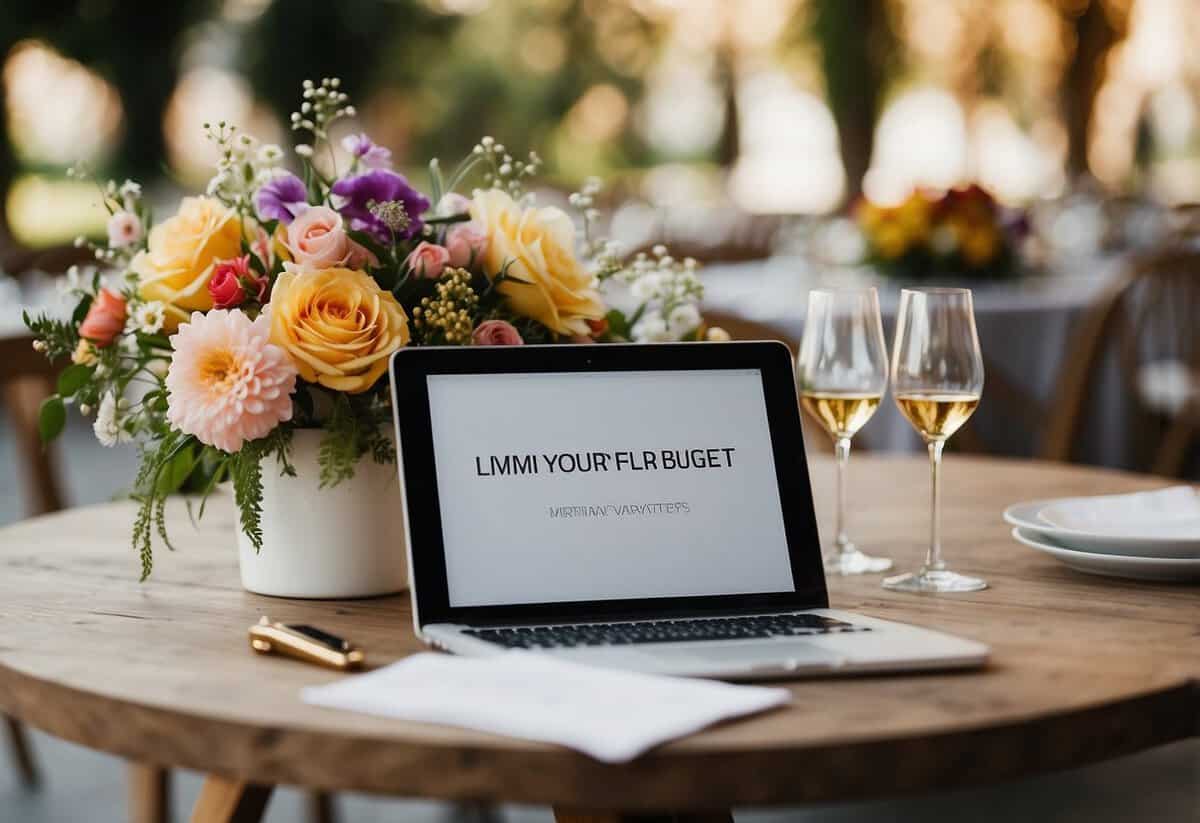
Choosing fewer types of flowers can save you money. When your florist sources just one or two varieties, they often buy in bulk. This can lead to discounts that help trim your budget.
Opting for flowers in the same color or shape can also create a more cohesive look. Some great options include roses, lilies, and hydrangeas.
Using fewer flower varieties simplifies arrangements and can make them look more elegant. It also helps your florist focus on making each bouquet perfect without juggling too many flower types.
3) Repurpose Ceremony Arrangements
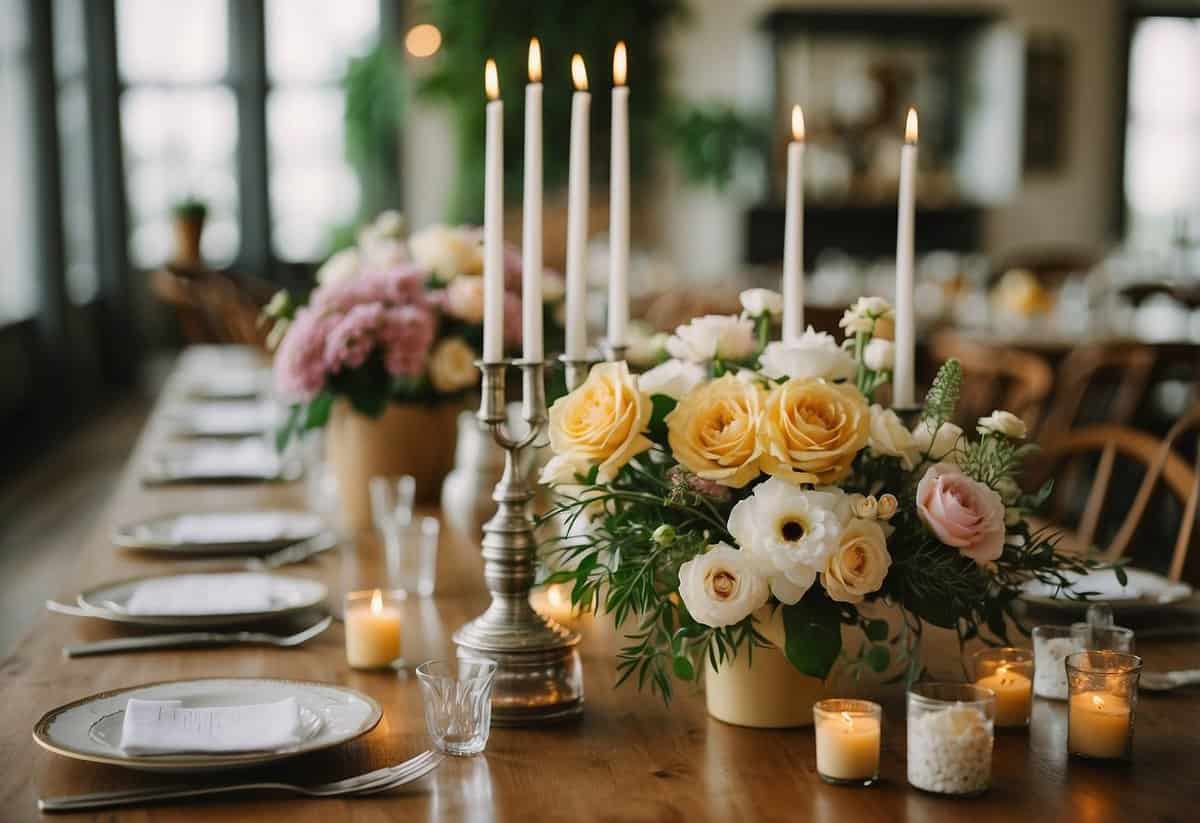
You can save a lot by repurposing your ceremony flowers. After the ceremony, use those beautiful arrangements to decorate your reception.
Place ceremony flowers on the sweetheart table or head table. This creates a stunning focal point. You can also use them as centerpieces on guest tables.
Even bridesmaids’ bouquets can be placed in vases to add charm around the venue. Repurposing saves money and makes the most of your floral investment.
Consider using ceremony arrangements for the after-wedding brunch too. These flowers can make your breakfast gathering look lovely without extra cost.
4) Opt for Smaller Bouquets
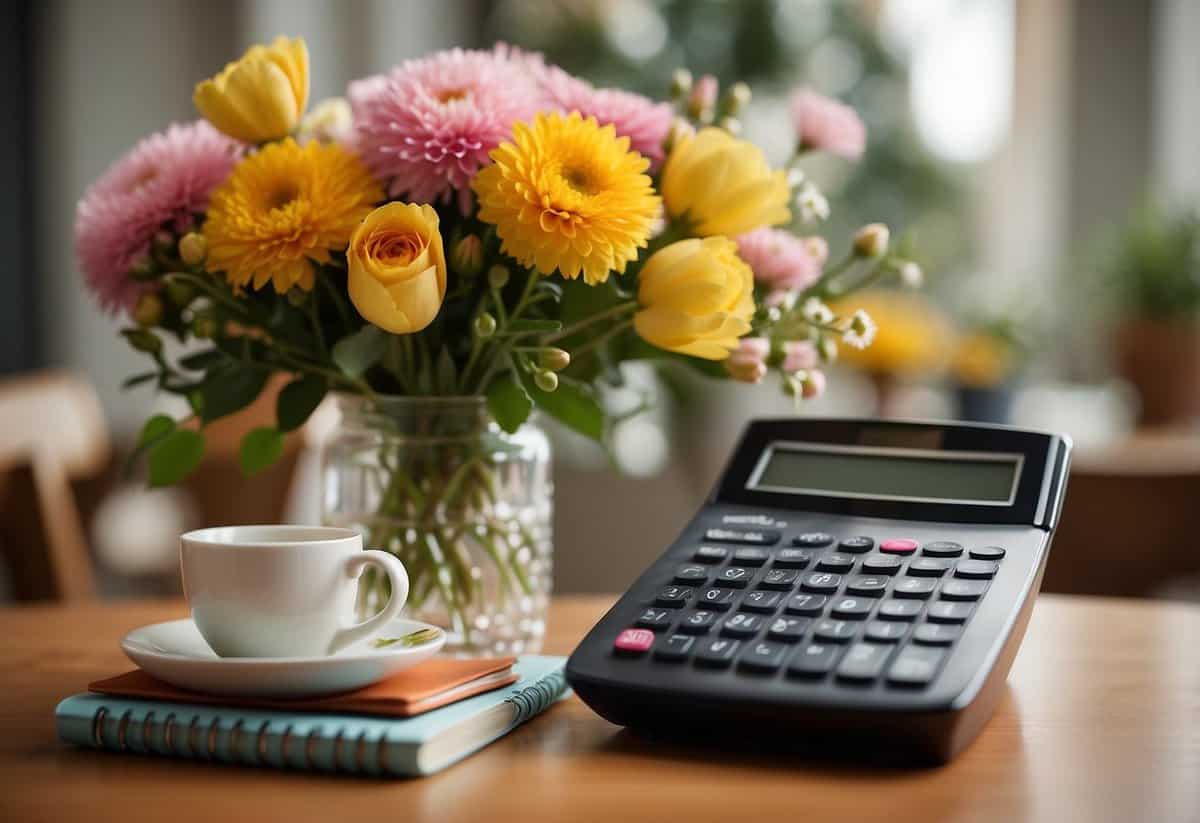
Choosing smaller bouquets can be a great way to save money on your wedding flowers. These petite arrangements still look beautiful and can add a delicate touch to your special day.
Smaller bouquets also make it easier for your bridesmaids to carry them, and they often photograph just as well as larger ones. Plus, they allow for more comfortable and natural poses in your pictures.
You can focus on a few standout blooms and greenery, which can make the smaller arrangement look fuller. This way, you get a charming and elegant look without breaking the bank.
5) Use Greenery to Fill Spaces
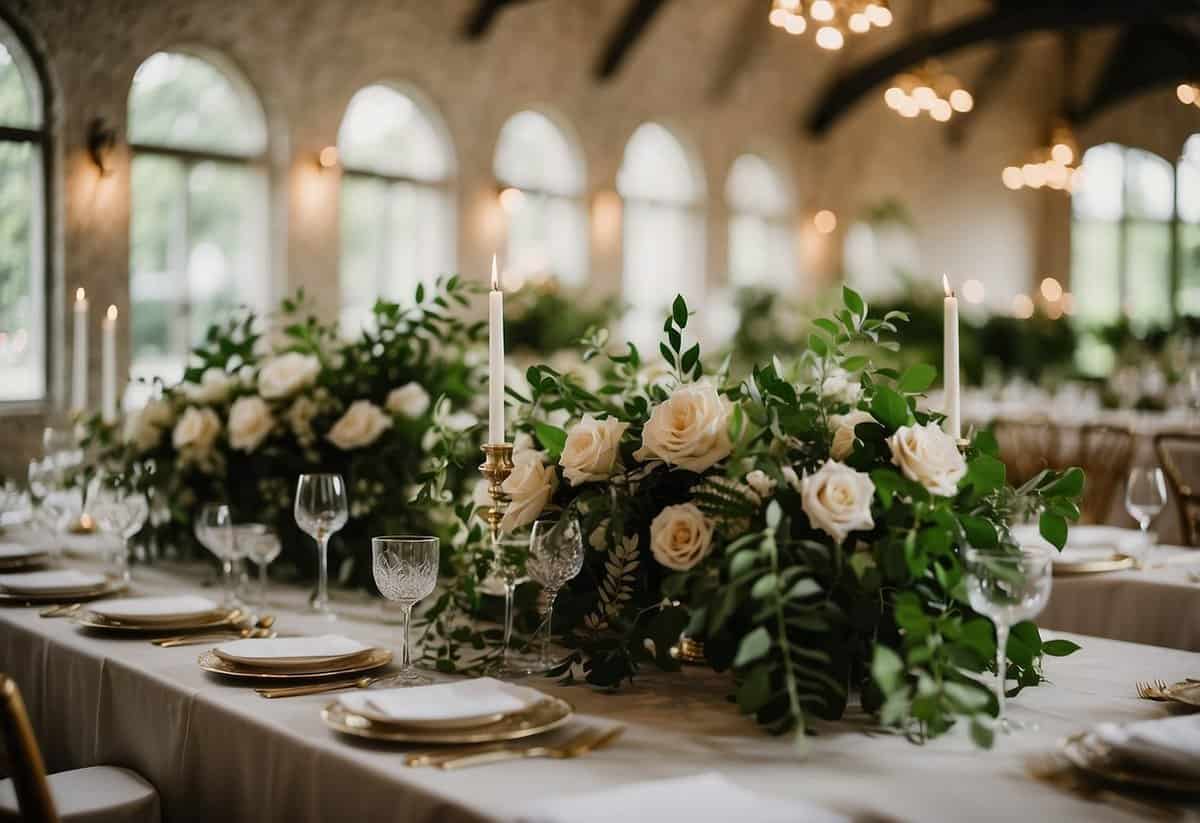
Greenery can be a cost-effective way to add charm to your wedding décor. Instead of using expensive flowers everywhere, consider filling spaces with lush greens.
You can mix greenery with a few flowers to make it look rich without spending too much. Greenery alone can still look beautiful and natural, giving your wedding a fresh feel.
Try adding greenery to your table centerpieces or creating simple but elegant garlands. It’s also perfect for decorating arches, chairs, and other large spaces. This way, you can save on flowers while still achieving a stunning look.
6) Select Local and In-Season Blooms
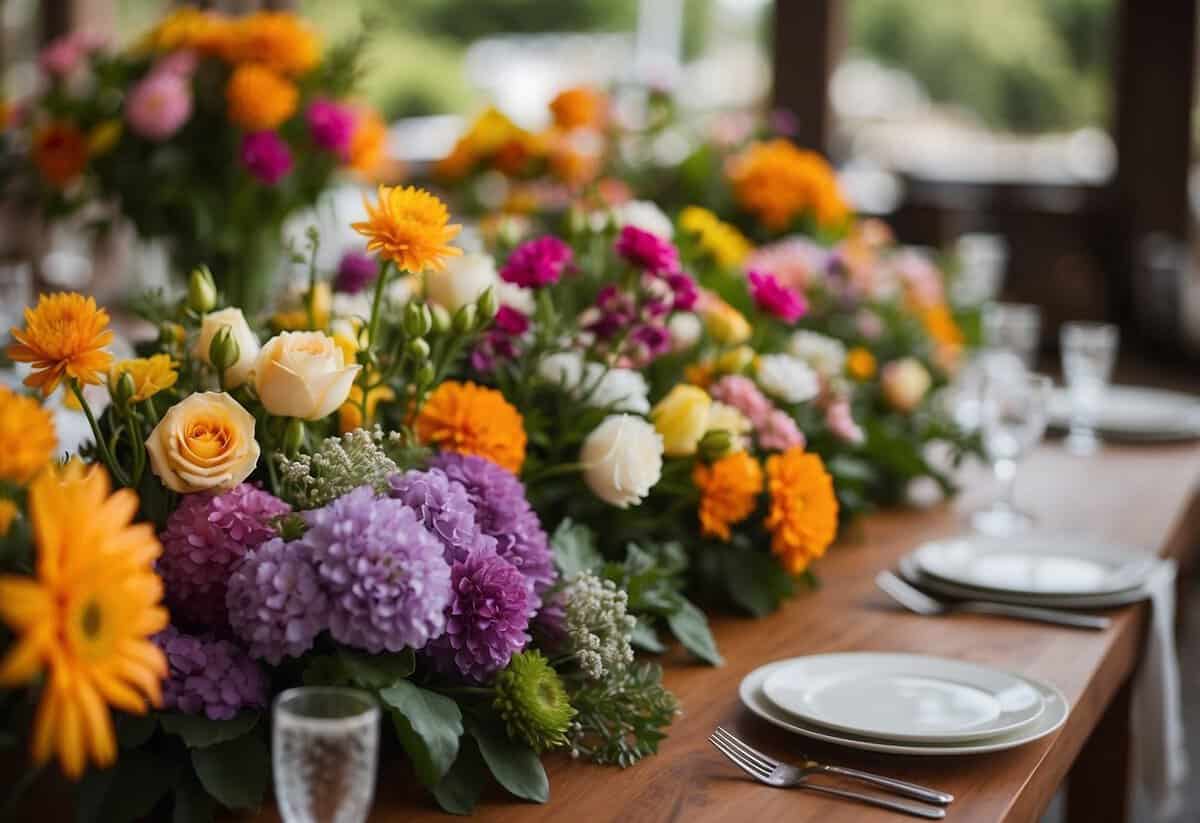
Choosing local and in-season flowers can save you a lot of money. These blooms don’t need to be shipped from far away, which cuts down on costs.
Local blooms are fresher and last longer. This means they’ll look better for your wedding day.
In-season flowers are more plentiful and cheaper because they aren’t rare. You can also find unique flowers that might not be available out of season.
Supporting local growers is great for the community and the environment. It reduces transportation emissions and supports small businesses.
Talk to your florist about which flowers are in season for your wedding date. They can help you make the best choices for your budget and style.
7) DIY Certain Arrangements
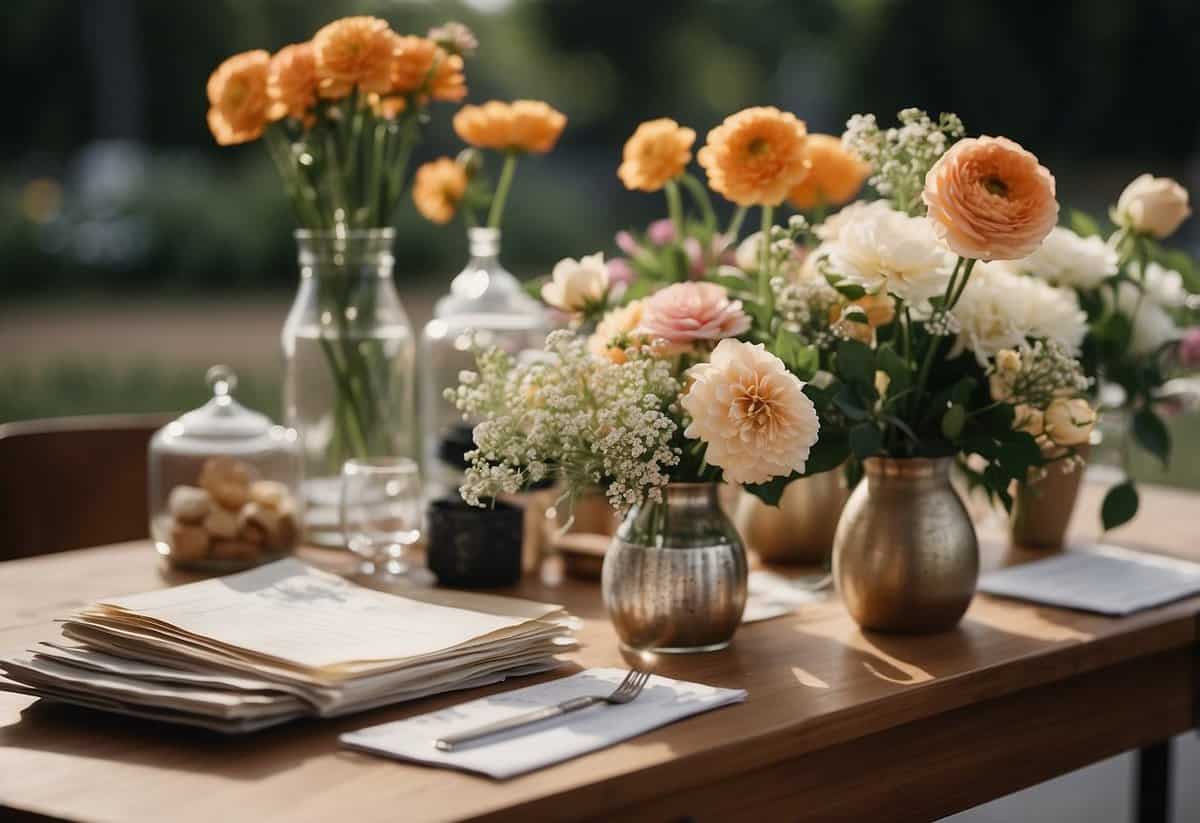
One way to save money on wedding flowers is to make some of the arrangements yourself. Start with simple projects like table centerpieces or bouquets.
Using floral foam can help you arrange the flowers easily. Let the foam soak in water for 15 minutes before placing your flowers.
Begin with your main flower in the center. Add secondary flowers and filler greenery around it. This gives your arrangement a lush look without overspending.
Buying flowers in bulk from a wholesale vendor can help you stay within budget. Wholesale prices are usually much lower than traditional flower shop prices.
Remember to plan your workload and allow enough time the week of your wedding to complete your arrangements. This helps ensure everything looks fresh and beautiful on your special day.
8) Skip the Floral Centerpieces
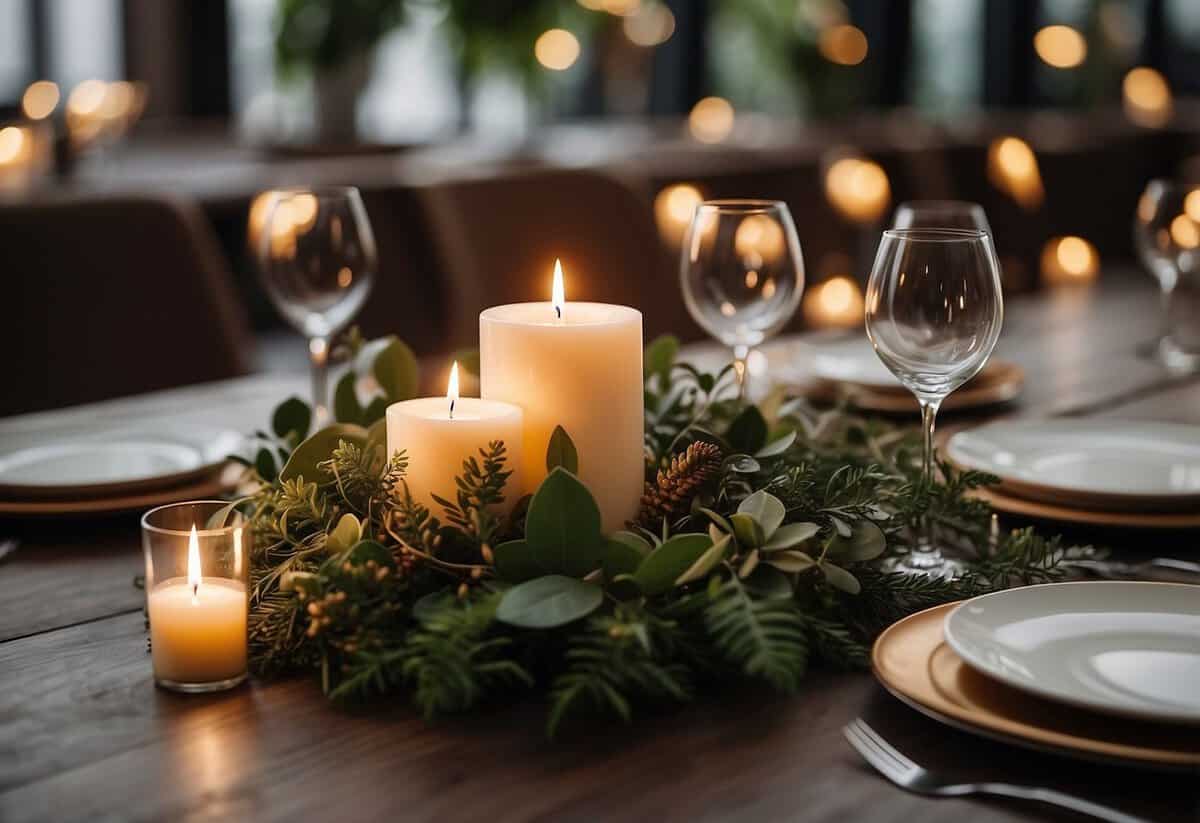
You don’t always need flowers to create a beautiful centerpiece. Consider using hurricane lanterns which can come in various finishes like gold, silver, or wood. These can stand out and add charm.
Candles are another great option. Classic taper candles, for example, can create a romantic ambiance without breaking the bank. Arrange them at different heights for an elegant look.
You can also use items like books, vintage bottles, or even small potted plants. These alternatives are often cheaper and can be a unique touch.
9) Consider Potted Plants
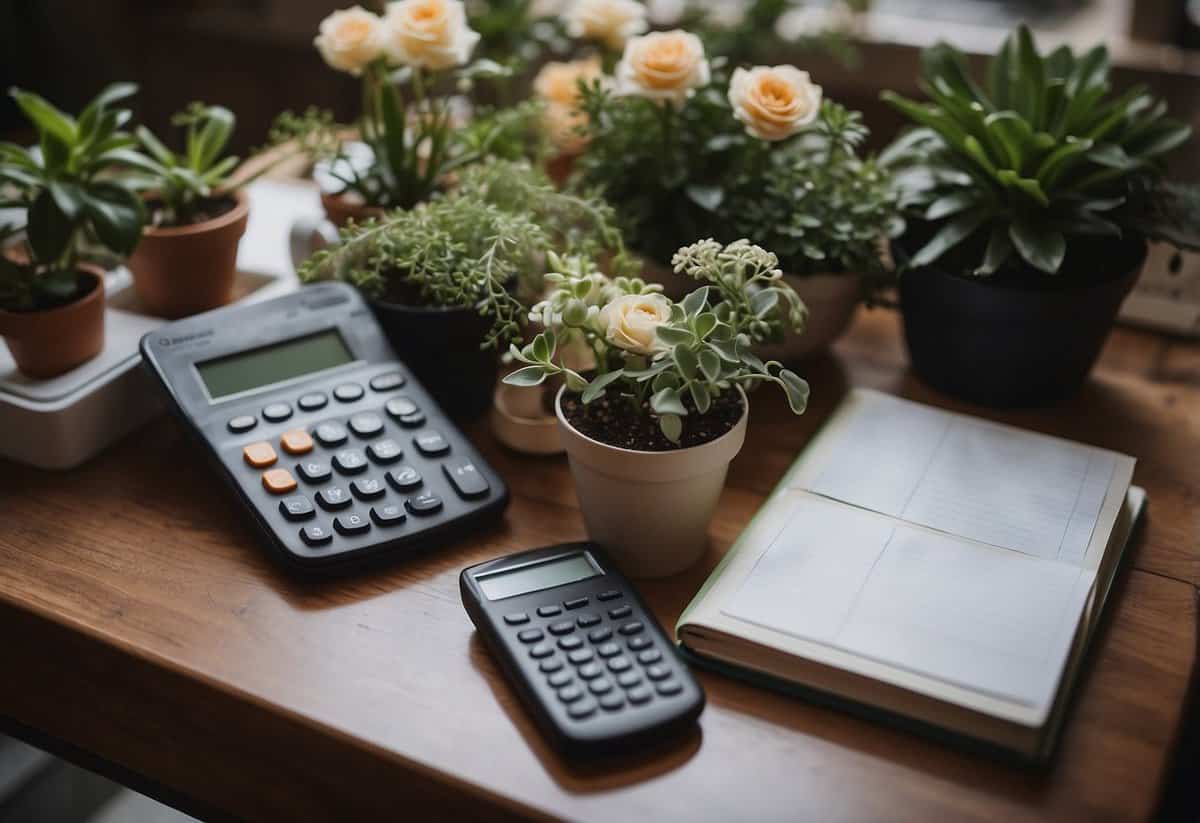
Potted plants are a fantastic option for wedding décor. They are often more affordable than cut flowers and can add a natural, fresh touch to your setting.
Use potted plants to frame your ceremony space. Larger plants can create a dramatic backdrop, while smaller ones are perfect for defining the aisle.
Potted plants are also great for centerpieces. Simple and charming, they can be easily arranged on tables. Plus, your guests can take them home as lovely keepsakes.
10) Choose a Simple Boutonniere
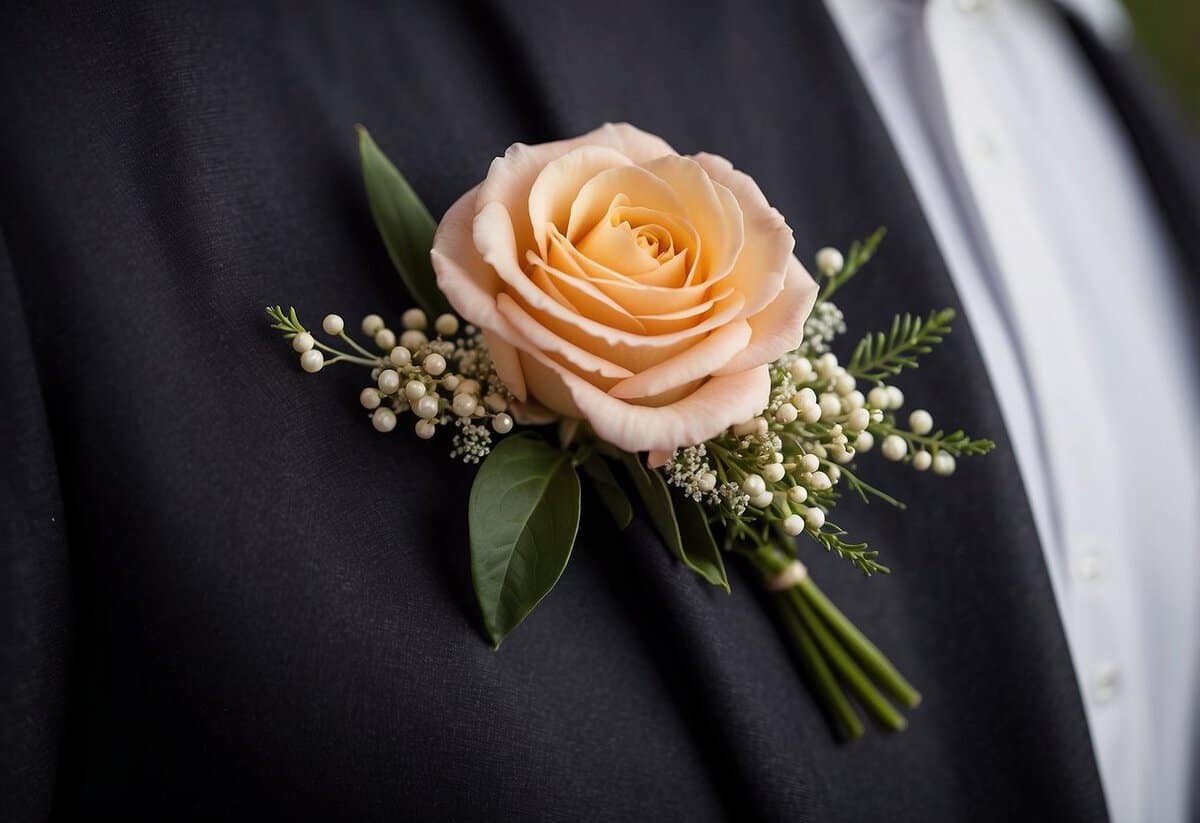
Opting for a simple boutonniere can save you both time and money. Instead of an elaborate arrangement, go for a small, tasteful flower like a rose or a carnation.
A single flower with a bit of greenery can look elegant and is less expensive than a more complex design. Faux flowers are also a budget-friendly option that looks beautiful and lasts forever.
Simple boutonnieres are easier to make yourself if you’re into DIY projects. You can wrap the stem with a satin ribbon and secure it with floral tape.
This approach not only keeps the costs down but also adds a personal touch to your wedding.
Setting Your Wedding Flower Budget
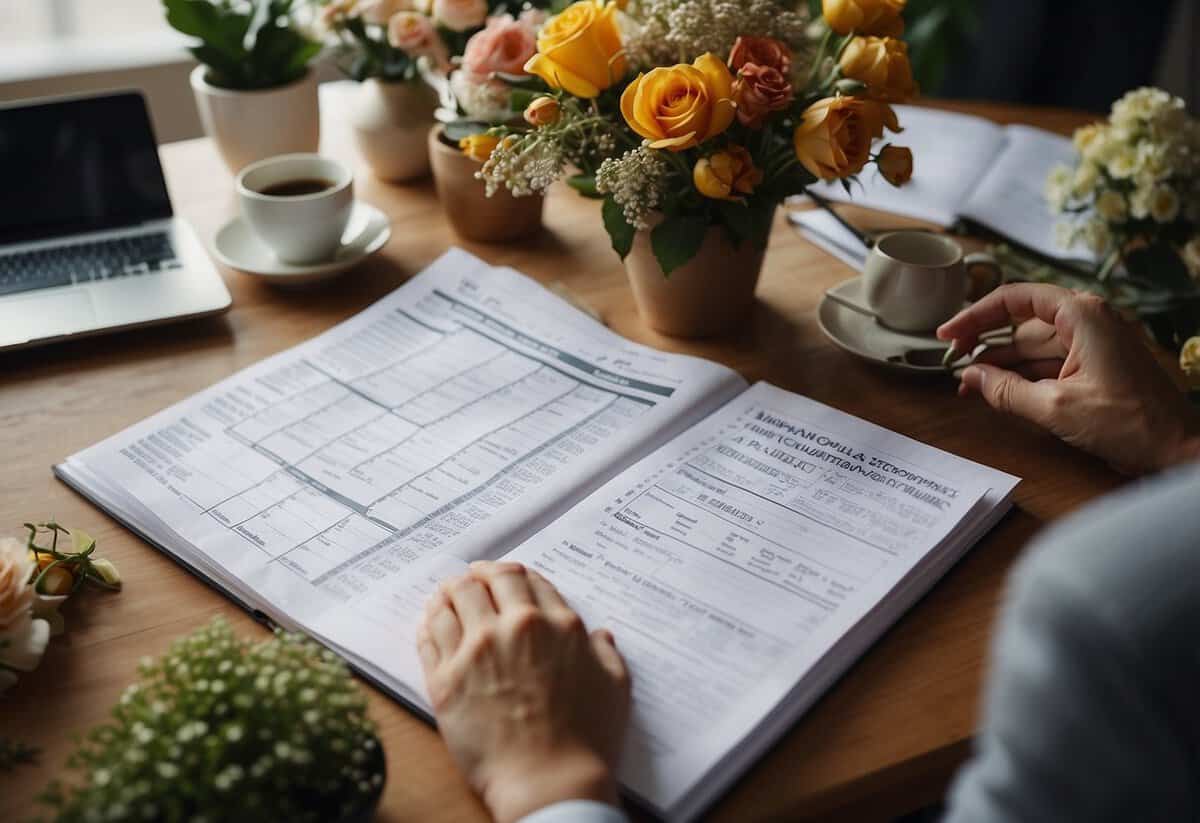
Setting a budget for wedding flowers ensures you stay within your overall wedding budget. Here’s how you can estimate costs and allocate funds to different floral needs.
Estimating Flower Costs
Start by deciding how much of your budget you want to spend on flowers. Many experts suggest around 8-10% of your total wedding budget, but this can vary.
Example:
- For a $20,000 wedding budget, plan to spend about $1,600-$2,000 on flowers.
List all floral needs like bouquets, boutonnieres, centerpieces, and decorations. Get quotes from multiple florists to understand price ranges. Seasonal flowers cost less and can help save money. Be prepared for additional costs like delivery and setup fees.
Allocating Funds Across Floral Needs
Break down your flower budget into specific categories.
Key areas to consider:
- Bridal bouquet: Averages between $150-$350.
- Bridesmaids’ bouquets: Each can be around $50-$100.
- Centerpieces: Typically run $50-$200 per table.
- Ceremony flowers and arrangements: Varies widely, budget $200-$800.
Use these estimates to adjust your budget. If needed, you can choose fewer arrangements or mix high-end flowers with more affordable ones. Prioritize which items are most important to help stay within your budget.
Choosing Cost-Effective Blooms

When planning your wedding, you can save on flowers by picking blooms that are in season and considering affordable alternatives to traditional flowers.
Seasonal Flower Selection
Selecting seasonal flowers can significantly cut costs. Flowers that are in season are easier to find, which usually makes them less expensive. For example, if you’re getting married in the spring, consider using tulips, daffodils, or peonies. These flowers are abundant in the spring months and will be more affordable than out-of-season blooms.
In the summer, daisies, sunflowers, and roses are great options. Fall weddings can incorporate chrysanthemums and marigolds, which are plentiful during autumn. Winter weddings can use evergreens and holly, or find beauty in amaryllis and poinsettias. Choosing flowers that naturally flourish during your wedding season ensures freshness and budget-friendly pricing.
Affordable Alternatives to Traditional Flowers
If traditional wedding flowers are out of your price range, consider more affordable alternatives. For instance, instead of roses, you could use carnations or daisies, which are less expensive but still beautiful. Baby’s breath is another cost-effective option that can add a delicate touch to bouquets and centerpieces.
You can also look at greenery for both decor and bouquets. Eucalyptus and ferns are affordable and add a lush, natural feel. Silk flowers are another option. They can be kept as keepsakes and are often cheaper in bulk.
Another idea is to mix flowers with non-floral elements like feathers, ribbons, or even simple candles for a unique and cost-effective arrangement. This blend can help lower the floral budget without sacrificing style.
Working with Florists
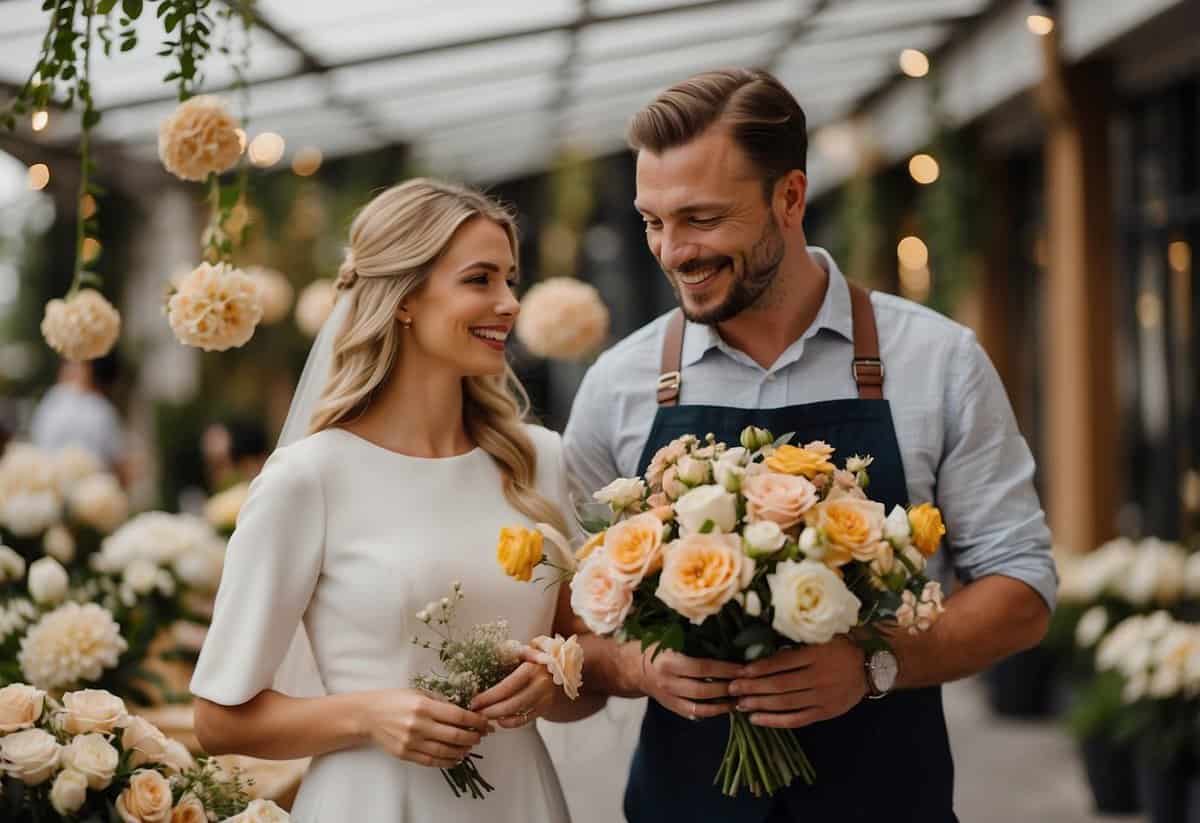
Working with florists can help you manage your flower budget efficiently. It’s important to communicate your budget clearly and negotiate prices and packages to get the best deal.
Communicating Your Budget to Florists
Start by setting a clear budget for your wedding flowers. Explain how much you’re willing to spend. Knowing your budget helps florists recommend flowers and styles that fit within your price range.
Ask florists about the types of flowers available during your wedding season. Seasonal flowers are usually cheaper and can stretch your budget further. Be open to alternatives if your first choices are too expensive.
Lists and Visuals can be very helpful. Bring photos of arrangements you like. This helps the florist understand your vision. Provide a prioritized list of must-have flowers. This way, they know which elements are most important.
Negotiating Prices and Packages
When discussing prices, ask if the florist offers packages or discounts. Sometimes, combining services (like bouquets and centerpieces) can save you money. Don’t be afraid to ask for a better price, especially if you’re placing a large order.
Inquire about bulk purchases. Buying flowers in bulk can often lower costs. Some florists might lower the price if you purchase larger quantities.
Reuse flowers whenever possible. Flowers used in the ceremony can often be repurposed for the reception. This maximizes your floral budget.
Keep the conversation open and honest. If a proposed price is too high, discuss alternative options or trimming down the order. This helps ensure you stay within budget without compromising too much on your vision.







